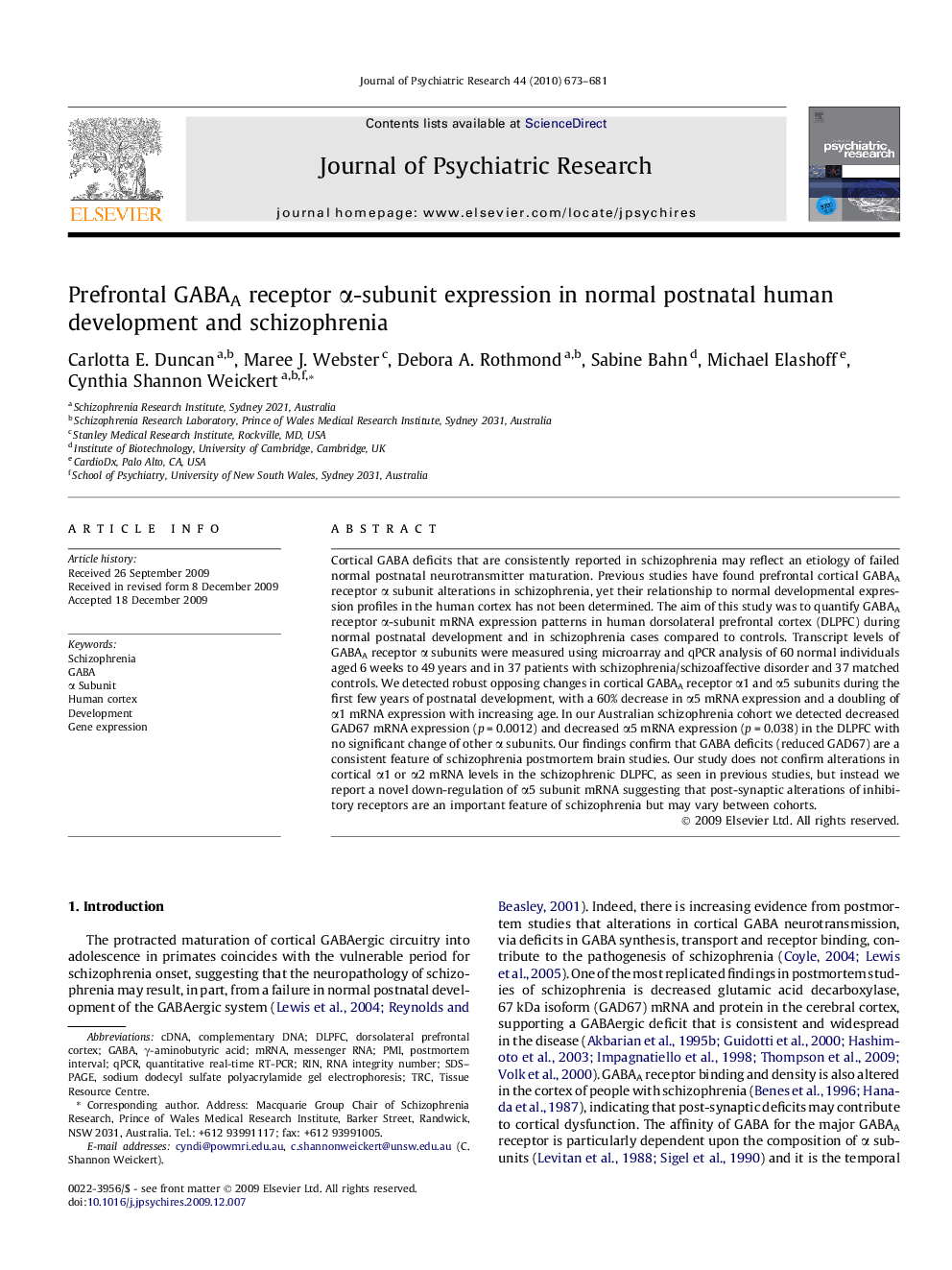| کد مقاله | کد نشریه | سال انتشار | مقاله انگلیسی | نسخه تمام متن |
|---|---|---|---|---|
| 327152 | 542763 | 2010 | 9 صفحه PDF | دانلود رایگان |

Cortical GABA deficits that are consistently reported in schizophrenia may reflect an etiology of failed normal postnatal neurotransmitter maturation. Previous studies have found prefrontal cortical GABAA receptor α subunit alterations in schizophrenia, yet their relationship to normal developmental expression profiles in the human cortex has not been determined. The aim of this study was to quantify GABAA receptor α-subunit mRNA expression patterns in human dorsolateral prefrontal cortex (DLPFC) during normal postnatal development and in schizophrenia cases compared to controls. Transcript levels of GABAA receptor α subunits were measured using microarray and qPCR analysis of 60 normal individuals aged 6 weeks to 49 years and in 37 patients with schizophrenia/schizoaffective disorder and 37 matched controls. We detected robust opposing changes in cortical GABAA receptor α1 and α5 subunits during the first few years of postnatal development, with a 60% decrease in α5 mRNA expression and a doubling of α1 mRNA expression with increasing age. In our Australian schizophrenia cohort we detected decreased GAD67 mRNA expression (p = 0.0012) and decreased α5 mRNA expression (p = 0.038) in the DLPFC with no significant change of other α subunits. Our findings confirm that GABA deficits (reduced GAD67) are a consistent feature of schizophrenia postmortem brain studies. Our study does not confirm alterations in cortical α1 or α2 mRNA levels in the schizophrenic DLPFC, as seen in previous studies, but instead we report a novel down-regulation of α5 subunit mRNA suggesting that post-synaptic alterations of inhibitory receptors are an important feature of schizophrenia but may vary between cohorts.
Journal: Journal of Psychiatric Research - Volume 44, Issue 10, July 2010, Pages 673–681